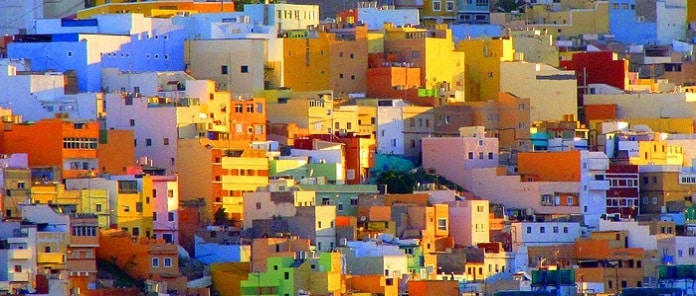Portugal is a small country that faces the Atlantic coast of the Iberian Peninsula. Because of its beautiful coastline and historical heritage, it is one of the most visited countries in Europe. Its smaller size makes it easier to get around and see more places than say neighboring Spain in the same amount of time. The temperate climate makes it a year-round vacation destination, where travelers can see Roman and Moorish ruins among other tourist attractions in Portugal.
1. Sao Jorge Castle
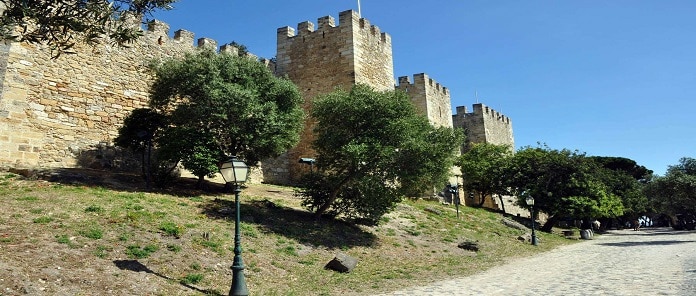
The São Jorge Castle is one of the top tourist attractions in Lisbon as it can be seen from all over the city. It dates back to Roman times, though the Moors rebuilt the fortifications in the 10th century. The castle was freed from Moorish rule in 1147 during the Siege of Lisbon in the Second Crusade. It later served as the residence of King Alfonso III. The castle has been destroyed and rebuilt several times. Today, walls and 18 towers that visitors can climb remain.
2. Capela dos Ossos

The Capela dos Ossos would appear to come straight out of a Halloween movie, but, in reality, it was a simple solution by 16th century monks on what to do about too many cemeteries taking up space in Evora. They moved the human remains to a special chapel, known as Bone Chapel, where the bones decorate the interior of the chapel. The chapel is part of the Gothic Church of St. Francis. It’s estimated that 5,000 skeletons, including skulls, adorn the chapel walls and ceiling.
3. Obidos Castle
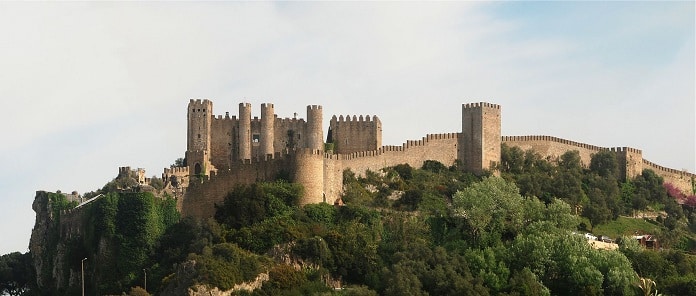
Obidos Castle is an impressive structure that sits on a hill at Obidos, a small city that dates back to Roman times on Portugal’s Atlantic coast. The Moors built the castle sometime in the eighth century. It was remodeled around the 14th century and a keep was added. The castle today houses a luxury pousada hotel. A traditional medieval market takes place in the castle every July.
4. Serra da Estrela

Go hiking or climbing in the rugged mountainous landscape of the Parque Natural da Serra da Estrela in the centre of Portugal. It’s Portugal’s largest protected area of countryside – more than 1,000sqm of rock-strewn meadows, gushing rivers and waterfalls, forested slopes, terraced fields and icy lakes – and where you’ll find Portugal’s highest peak, Torre or ‘tower’ at 1,993m. There are lots of hikes and trails and some dramatic drives, especially from Manteigas or Covilhã up to Torres. On the way up to the rocky gorges, look out for casais, traditional one-room stone shepherds’ huts thatched with straw. Sheeps’ wool once made this one of Europe’s biggest wool-producing regions – there’s a museum that tells the story in Covilhã. The mountain town of Manteigas, with its cobbled streets and picturesque houses, makes a great base to explore the area.
5. Monsanto

The sun-baked plains, olive groves and granite outcrops in Beira Baixa in Eastern Portugal is the land that time forgot – and where you’ll find a village that could have come straight out of The Lord of the RIngs. Perched 2,486ft above sea level and with breath-taking views, the village of Monsanto grew up and around gigantic, and seemingly precariously balanced, granite boulders on the side of the vertiginous Mons Sanctus. The boulders have been used as floors, walls and even (nerve-wrackingly) roofs in houses that date back 500 years; look out for the Casa de Uma Só Telha, the house with only one tile – a massive lump of granite. You might see villagers singing with square Moorish tambourines called adufe, donkeys as the main form of transport around the narrow cobbled streets, and rag dolls called marafonas used to ward off sorcery. A few kilometres to the north is the horseshoe-shaped mediaeval village of Sorthelha with its ruined castle – and more granite. This is a region best explored by car as public transport is infrequent and slow.
6. Pena National Palace, Sintra

The Pena National Palace seems like a fairy tale castle as it stands above the clouds on overcast days. Yet, sitting atop a hill in Sintra, it can be seen from Lisbon on a clear day. Created by King Ferdinand II, it is an impressive example of 19th century Romanticism, not only in Portugal but also the world, as it combines Moorish and Manueline architectural styles. It started out as a chapel to Our Lady of Pena during the Middle Ages, and is used for state occasions today.
7. Praia da Marinha
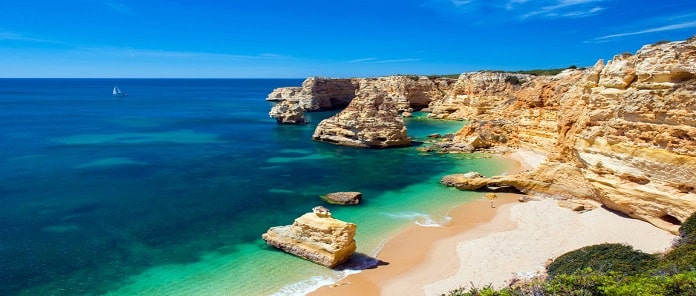
Praia da Marinha is considered one of the most beautiful beaches in Portugal. Located in the Atlantic coast region of Algarve, the beach is flanked by gorgeous blue waters on one side, and sandy beaches and high cliffs on the landside. Also known as Navy Beach, it is a small cove that is used extensively as an image in travel brochures. The beach’s clear waters make it a good place for snorkeling. This picturesque beach is about a 30-minute drive from Albuferia; free parking is available.
8. Belem Tower

Belem Tower, also known as the Tower of St. Vincent, sits on what once was an island in the Tagus River in Lisbon, the capital of Portugal. Dating back to 1515, the imposing tower was built both to defend Lisbon from invaders and to welcome the city’s friends. Built in the Age of Discovery, the four-story limestone tower has a bastion connected to it; the bastion had space for 17 cannons that could fire long range shots. A statue of Our Lady of Safe Homecoming, designed to protect sailors on their voyages, faces the river.
9. Cais da Ribeira
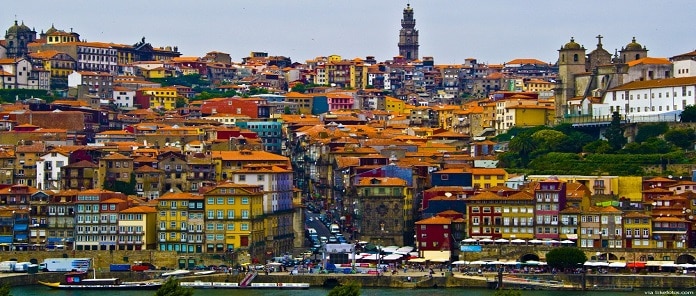
Cais da Ribeira is a charming picturesque district in Porto, sometimes referred to as “the soul of Porto.” It’s made up of medieval streets that end on a square by the Douro River. Medieval buildings are filled with bars, cafes and restaurants, making Ribeira a popular place for eating and drinking. Ribeira is especially popular on feast days when townspeople flock there to see fireworks. There’s a bronze cube in the middle of the square. Nearby is the house where Prince Henry the Navigator was born in 1394.
10. Cabo Girao
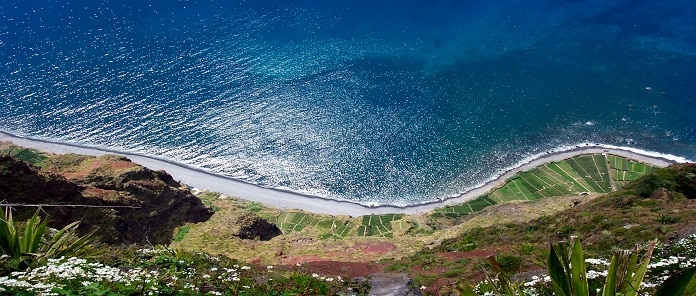
Cabo Girão is located in the southern coast of Madeira, in the Portuguese archipelago with the same name. At 570 meters (1,870 feet), the cliff is often referred to as the highest sea cliff in Europe but at least three European cliffs are higher. The view down the almost sheer drop to the ocean is thrilling nonetheless. In 2012 a glass-floored platform was installed creating an even scarier viewing experience.
